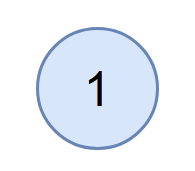This is a Graph Problem - Not a Tree Problem! Part II
Another deceiving problem: don't try to solve it as a Tree problem, you'll get stuck. Transform the tree into a graph first. Then, find the longest path starting from 'start' node, using DFS. Code is down below, cheers, ACC.


2385. Amount of Time for Binary Tree to Be Infected
Medium
You are given the root of a binary tree with unique values, and an integer start. At minute 0, an infection starts from the node with value start.
Each minute, a node becomes infected if:
- The node is currently uninfected.
- The node is adjacent to an infected node.
Return the number of minutes needed for the entire tree to be infected.
Example 1:

Input: root = [1,5,3,null,4,10,6,9,2], start = 3 Output: 4 Explanation: The following nodes are infected during: - Minute 0: Node 3 - Minute 1: Nodes 1, 10 and 6 - Minute 2: Node 5 - Minute 3: Node 4 - Minute 4: Nodes 9 and 2 It takes 4 minutes for the whole tree to be infected so we return 4.
Example 2:

Input: root = [1], start = 1 Output: 0 Explanation: At minute 0, the only node in the tree is infected so we return 0.
Constraints:
- The number of nodes in the tree is in the range
[1, 105]. 1 <= Node.val <= 105- Each node has a unique value.
- A node with a value of
startexists in the tree.
public class Solution {
public int AmountOfTime(TreeNode root, int start)
{
Hashtable graph = new Hashtable();
Queue queue = new Queue();
queue.Enqueue(root);
while (queue.Count > 0)
{
TreeNode node = queue.Dequeue();
if (!graph.ContainsKey(node.val)) graph.Add(node.val, new Hashtable());
Hashtable children = (Hashtable)graph[node.val];
if (node.left != null)
{
if (!children.ContainsKey(node.left.val)) children.Add(node.left.val, true);
if (!graph.ContainsKey(node.left.val)) graph.Add(node.left.val, new Hashtable());
Hashtable leftChildren = (Hashtable)graph[node.left.val];
if (!leftChildren.ContainsKey(node.val)) leftChildren.Add(node.val, true);
queue.Enqueue(node.left);
}
if (node.right != null)
{
if (!children.ContainsKey(node.right.val)) children.Add(node.right.val, true);
if (!graph.ContainsKey(node.right.val)) graph.Add(node.right.val, new Hashtable());
Hashtable rightChildren = (Hashtable)graph[node.right.val];
if (!rightChildren.ContainsKey(node.val)) rightChildren.Add(node.val, true);
queue.Enqueue(node.right);
}
}
Hashtable visitedNode = new Hashtable();
visitedNode.Add(start, true);
int retVal = 0;
FindLongestPath(graph, start, visitedNode, 0, ref retVal);
return retVal;
}
private void FindLongestPath(Hashtable graph,
int node,
Hashtable visitedNode,
int currentPathLen,
ref int longestPathLen)
{
if (!graph.ContainsKey(node)) return;
longestPathLen = Math.Max(longestPathLen, currentPathLen);
Hashtable children = (Hashtable)graph[node];
foreach (int child in children.Keys)
{
if (!visitedNode.ContainsKey(child))
{
visitedNode.Add(child, true);
FindLongestPath(graph, child, visitedNode, currentPathLen + 1, ref longestPathLen);
}
}
}
} 


Comments
Post a Comment